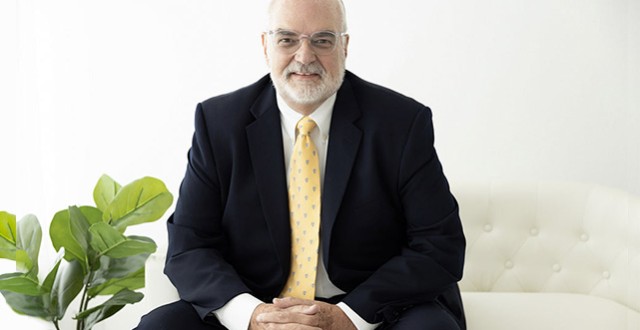
- Mediation
- Arbitration
- Court Neutrals
- Online Dispute Resolution
- Technology
- Court Decisions
- More
- Legislation
- Healthcare
- Guest Posts
- John DeGroote
- John C. Fleming
- Rick Freeman
- Professor Peter Friedman
- Honorable W. Royal Furgeson, Jr.
- James M. Gaitis
- Laura A. Kaster
- Professor John Lande
- Philip J. Loree, Jr.
- Michael McIlwrath
- F. Peter Phillips
- Professor Alan Scott Rau
- Professor Thomas J. Stipanowich
- Professor S.I. Strong
- Richard Webb
- Glen M. Wilkerson
- International arbitration
- Regulation
- Sports and Entertainment
- We’re Back!!!!Well, it’s been a while since we published and that is about to change. Since I spent much of last year becoming
 JAMS Welcomes Karl Bayer to its Panel of NeutralsJAMS, the world’s largest private alternative dispute resolution (ADR) provider, is pleased to announce that Karl Bayer
JAMS Welcomes Karl Bayer to its Panel of NeutralsJAMS, the world’s largest private alternative dispute resolution (ADR) provider, is pleased to announce that Karl Bayer Class Action Waivers in Arbitration Agreements: The Twenty-First Century Arbitration Battleground and Implications for the EU CountriesLinda S. Mullenix, Morris & Rita Atlas Chair in Advocacy at the University of Texas School of Law, has written “Class Ac
Class Action Waivers in Arbitration Agreements: The Twenty-First Century Arbitration Battleground and Implications for the EU CountriesLinda S. Mullenix, Morris & Rita Atlas Chair in Advocacy at the University of Texas School of Law, has written “Class Ac Picking the Proper Technological Tool for Problem-Solving in ArbitrationProfessor Amy J. Schmitz, John Deaver Drinko-Baker & Hostetler Chair in Law and Co-Director of the Translational Data An
Picking the Proper Technological Tool for Problem-Solving in ArbitrationProfessor Amy J. Schmitz, John Deaver Drinko-Baker & Hostetler Chair in Law and Co-Director of the Translational Data An
Recent Posts
Article | Mass Procedures as a Form of ‘Regulatory Arbitration’ | Abaclat v. Argentine Republic and the International Investment Regime
Professor S.I. Strong (University of Missouri School of Law) has posted “Mass Procedures as a Form of ‘Regulatory Arbitration’ – Abaclat v. Argentine Republic and the International Investment Regime,” 38 The Journal of Corporation Law __ (forthcoming 2013) on SSRN. The abstract is: Commentators and counsel agree that Abaclat v. Argentine Republic is one of the most important investment arbitrations in recent years. Described alternatively as “unprecedented,” a “landmark ruling” and a “quantum leap,” the jurisdictional and dissenting awards were voted the most controversial arbitration decisions of 2011 by experts in the field. Although Abaclat addresses a number of issues of first impression, perhaps the most novel aspect of the dispute is that it marks the first time that a large number of claimants – in this case, 60,000 Italian natural and legal persons – have joined together in a single treaty-based (ICSID) arbitration. While large-scale dispute resolution procedures may not seem that remarkable to U.S.-trained lawyers familiar with class action litigation, such techniques are unusual in most national courts outside the United States and unprecedented in the investment realm. In particular, such procedures give rise to the question of whether the international investment regime is in the process of embracing a form of “regulatory arbitration” that is akin to regulatory litigation. Regulatory litigation results when individual litigants enforce certain public laws as a matter of institutional design. If such a device is developing in the investment realm, it could provide a new solution to certain intransigent problems relating to large-scale international injuries. However, such a mechanism could also require a radical re-evaluation of traditional notions regarding the concept of “regulation” and intensify debates about the proper role and goals of investment arbitration as a matter of public international law. This Article takes a unique and intriguing look at the issues presented by Abaclat, considering the legitimacy of mass procedures from a regulatory perspective and using new governance theory to determine whether a new form of regulatory arbitration is currently being developed. In so doing, the discussion describes the basic parameters of regulatory litigation and analyzes the special problems that arise when regulatory litigation is used in the transnational context, then transfers those concepts into the arbitral realm. This sort of analysis, which is entirely novel as a matter of either public or private law, will shape future inquiries regarding the propriety of both treaty-based arbitration and contract-based arbitration, including domestic forms of class arbitration. The full article may be downloaded here. Other scholarly papers by Professor S.I. Strong are here.
Continue reading...Texas Court of Appeals Reversed Vacatur of $125 Million Arbitration Award
by Jeremy Clare The Court of Appeals for the Fifth District of Texas at Dallas reversed the district court’s vacatur of a $125 million arbitration award and confirmed the award because the appellee failed to raise its complaint during the arbitration process. Background In Ponderosa Pine Energy, LLC, v. Tenaska Energy, Inc., et al, No. 05-10-00516-CV (Tex.App.—Dallas August 20, 2012), an arbitration panel awarded Ponderosa Pine Energy, LLC (“Ponderosa”) $125 million in a 2-1 decision against Tenaska Energy, Inc., et al (“Tenaska”). Ponderosa was represented by Frank Penski and Constance Boland, attorneys at Nixon Peabody LLP. Prior to the arbitration hearing, Samuel Stern, the arbitrator selected by Ponderosa, disclosed that (1) he was appointed as an arbitrator by a party represented by Nixon Peabody that resulted in a favorable outcome for that party; (2) on May 3, 2006 he participated in a meeting at the Nixon Peabody offices in his capacity as a member of the Advisory Board of Lexsite, an Indian company which provides support to law firms; (3) on June 19, 2006, he was appointed as an arbitrator by a party, on the recommendation of Nixon Peabody, in an unrelated arbitrator; (4) on June 26, 2006, he was appointed as an arbitrator by Ponderosa for this arbitration, on the recommendation of Nixon Peabody; and (5) on July 12, 2006, he was appointed as an arbitrator by a party, on the recommendation of Nixon Peabody, in Ada Co. Generation LP (“Ada”) v. Amway Co. District Court After the panel awarded Ponderosa $125 million, Tenaska filed a motion to vacate the award alleging that Stern was not impartial and free from bias. Tenaska complained that (1) Stern did not disclose that Penski and Boland were his direct contacts at Nixon Peabody and they directed what Stern disclosed to the defendants; (2) Penski and Boland had business discussions on behalf of Nixon Peabody with Lexsite, and Stern had a direct financial interest in Lexsite’s success; and (3) Stern was appointed by Penski for the Ada arbitration and Ada was owned by Delta Power Co. LLC (“Delta”), a company that previously owned Ponderosa and a key player in the current dispute. The court ultimately vacated the award on the basis that Stern exhibited evident partiality by (1) failing to fully disclose the Lexsite and Nixon Peabody relationships and (2) failing to fully and completely disclose the relevant facts about the Ada arbitration. Court of Appeals On appeal, Ponderosa contended that Stern disclosed enough information regarding his relationship with the lawyers, Lexsite, and Ada, and by not investigating further or objecting, Tenaska waived any post-arbitration partiality complaint. The Court agreed. First, with regard to Stern’s relationships with Penski, Boland, and Lexsite, the Court concluded that Stern’s disclosure put Tenaska on notice of the possibility of partiality and a few obvious questions from Tenaska would have adduced the information that they subsequently complained about. Second, with regard to Stern’s relationship with the Ada arbitration, the Court concluded that the disclosure and subsequent evidence presented during the arbitration hearing put Tenaska on notice of Delta’s involvement in the Ada arbitration. Tenaska waived their complaint because they failed to object or ask questions before the award was issued. The Court thus reversed and rendered judgment confirming the award. Jeremy Clare is a law clerk at Karl Bayer, Dispute Resolution Expert. Jeremy received his J.D. from the University of Texas School of Law in 2012 and received a B.A. from the University of South Carolina where he studied political science.
Continue reading...Health Care Conflict Resolution Part II: Separate the People from the Problem
by Holly Hayes We started our health care conflict resolution series with applying the principled negotiation method to health care (post available here). Principled negotiation involves: Separating the people from the problem. Focusing on interests, not positions. Generating a variety of possibilities before deciding what to do. Insisting that the result be based on some objective standard. This post will focus on “separating the people from the problem”. Here is an example of a healthcare conflict where the parties misunderstood each other, got angry and upset and started taking things personally: Radiology Director: Technician X, I have a patient complaint here that says it took over an hour for a basic scan to be performed last week. What were you doing that caused such a delay? Technician X: Which day, which patient? What were the details? Radiology Director: That doesn’t matter, what matters is that now we have a complaint against our department. Our reputation as a department and as a patient-friendly hospital is on the line. I’m going to have to put this complaint in your file. Now, what happened? Technician X: I guess it doesn’t matter, what matters is the complaint. I’ll try to see that it doesn’t happen again. Radiology Director: You do that. Another complaint like this and we’ll have to come up with a disciplinary action plan. What happened? The problem, “we cannot have complaints like this” became a personal attack on Technician X. If we can separate the people from the problem, we can maintain a good working relationship and successfully address the problem. In Getting to YES, Roger Fisher and William Ury outline three categories to think about in terms of dealing with people: perceptions, emotions and communication. Perceptions: In our example, the parties did not “put themselves in the other person’s shoes”. Had the Radiology Director listened to and responded to Technician X when he asked for the details, she might have gained a better understanding of the technician’s perception of the problem and why it happened. Understanding Technician X’s point of view would have allowed the Director to proceed with new information to solve the actual problem of a delay of service. Emotions: The Director did not recognize or explain her own emotions and why she was worried about the complaint. She also did not have any idea about how the technician felt about the complaint. When parties are freed from the burden of unexpressed emotions they can more likely work on the problem. Communication: In our scenario, the Director did not listen actively and acknowledge the technician as a human being with potentially useful information to address the problem. Let’s change the situation to separate the people from the problem using the techniques described above: Radiology Director: Technician X, I have a patient complaint here that says it took over an hour for a basic scan to be performed last week. Can you tell me more about what happened with Patient Y on Date Z? Technician X: I remember that patient and that incident. That was the day our CT scanner broke and we didn’t have a spare part, so we had to schedule all of the patients on one machine. We tried to explain the problem to all of the patients, but the waiting time was much longer than the departmental goals we have set for ourselves. I felt really bad about Patient Y because she was next in line when the scanner broke and her wait was the longest. Radiology Director: It is upsetting to me when we have a complaint because I have to respond to the CEO about what happened. You have given me some good information though. Do we need to work with our Physical Plant Maintenance Department and come up with a better system to keep spare parts on hand? Technician X: I was really upset about the delay, too. I would be happy to schedule a meeting with the Plant Department and come up with a better system. Technician A has experience in this area from another facility, could she work with me and we can bring you some recommendations to consider in the next two weeks? Radiology Director: Yes, please work with Technician A and the Physical Plant Department. Maybe we can turn this negative complaint into a positive by making sure it doesn’t happen again. I feel so much better now about communicating our plan of action to the CEO. When the Radiology Director dealt with Technician X as a human being and dealt with the problem on its own merits, she was able to maintain a good working relationship while successfully addressing the problem. Look for the next post in our series where we will discuss focusing on interests, not positions in the health care setting. We welcome any comments on this post and any suggestions for upcoming posts in this series. Holly Hayes is a mediator at Karl Bayer, Dispute Resolution Expert where she focuses on mediation of health care disputes. Holly holds a B.A. from Southern Methodist University and a Masters in Health Administration from Duke University. She can be reached at: holly@karlbayer.com.
Continue reading...AAA: India Johnson Selected to Lead the American Arbitration Association
NEW YORK, NEW YORK, July 13, 2012 – Joia Johnson, Chairperson of the Board of the American Arbitration Association® (AAA®), has announced that India Johnson, Senior Vice President and Chief Strategy Officer at the AAA has been promoted to the position of Acting Executive Vice President in anticipation of advancing to the position of President and CEO on January 1, 2013. At that time she will succeed William K. Slate II, the current President and CEO who has held that position since 1994, and who announced his planned retirement last September. India Johnson is a graduate of the University of Miami and holds an MBA from Georgia State University. She joined the AAA in 1974. She currently oversees the organization’s Commercial and Construction Divisions, as well as Marketing and Strategy. She is an authority on arbitration and mediation, and in addition to leading business and administrative operations she has also led and taught in education and training initiatives. She presently resides in Atlanta, Georgia, however, she will relocate to New York which is the location of corporate headquarters. John Kerr, Chairman of the AAA Executive Committee and the Presidential Search Committee, noted that “Ms. Johnson was selected from a large field of remarkably accomplished U.S. and international candidates. However, India’s deep knowledge of the ADR process, her proven business acumen and leadership success, as well the esteem in which she is held across the alternative dispute resolution field made her selection a unanimous recommendation by the diverse eight person search committee.” Joia Johnson added her delight in recognizing that “The new President will also, coincidentally, be the first woman to head the AAA which is presently 86 years young!” Until year’s end, India Johnson will serve as Executive Vice President, which essentially encompasses the duties of Chief Operating Officer. About the American Arbitration Association The global leader in conflict management since 1926, the American Arbitration Association is a not-for-profit, public service organization committed to the resolution of disputes through the use of arbitration, mediation, conciliation, negotiation, democratic elections and other voluntary procedures. In 2011, 187,596 cases were filed with the Association in a full range of matters including commercial, construction, labor, employment, insurance, international and claims program disputes. Through 22 offices in the United States, Mexico, and Singapore, the AAA provides a forum for the hearing of disputes, rules and procedures and a roster of impartial experts to resolve cases. Find more information online at www.adr.org.
Continue reading...Arbitration
Mediation
Healthcare Disputes
Legal Research
About Disputing
Disputing is published by Karl Bayer, a dispute resolution expert based in Austin, Texas. Articles published on Disputing aim to provide original insight and commentary around issues related to arbitration, mediation and the alternative dispute resolution industry.
To learn more about Karl and his team, or to schedule a mediation or arbitration with Karl’s live scheduling calendar, visit www.karlbayer.com.






